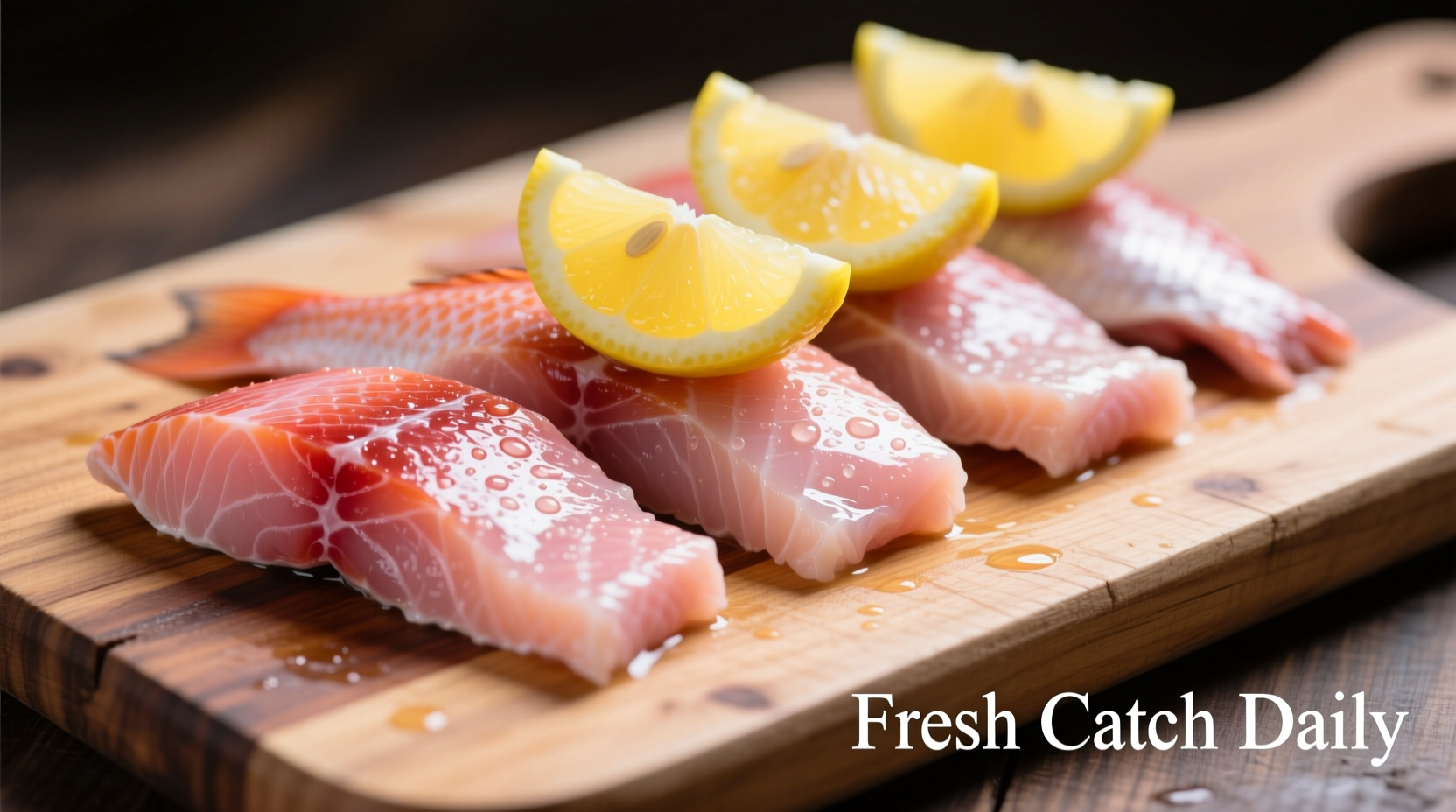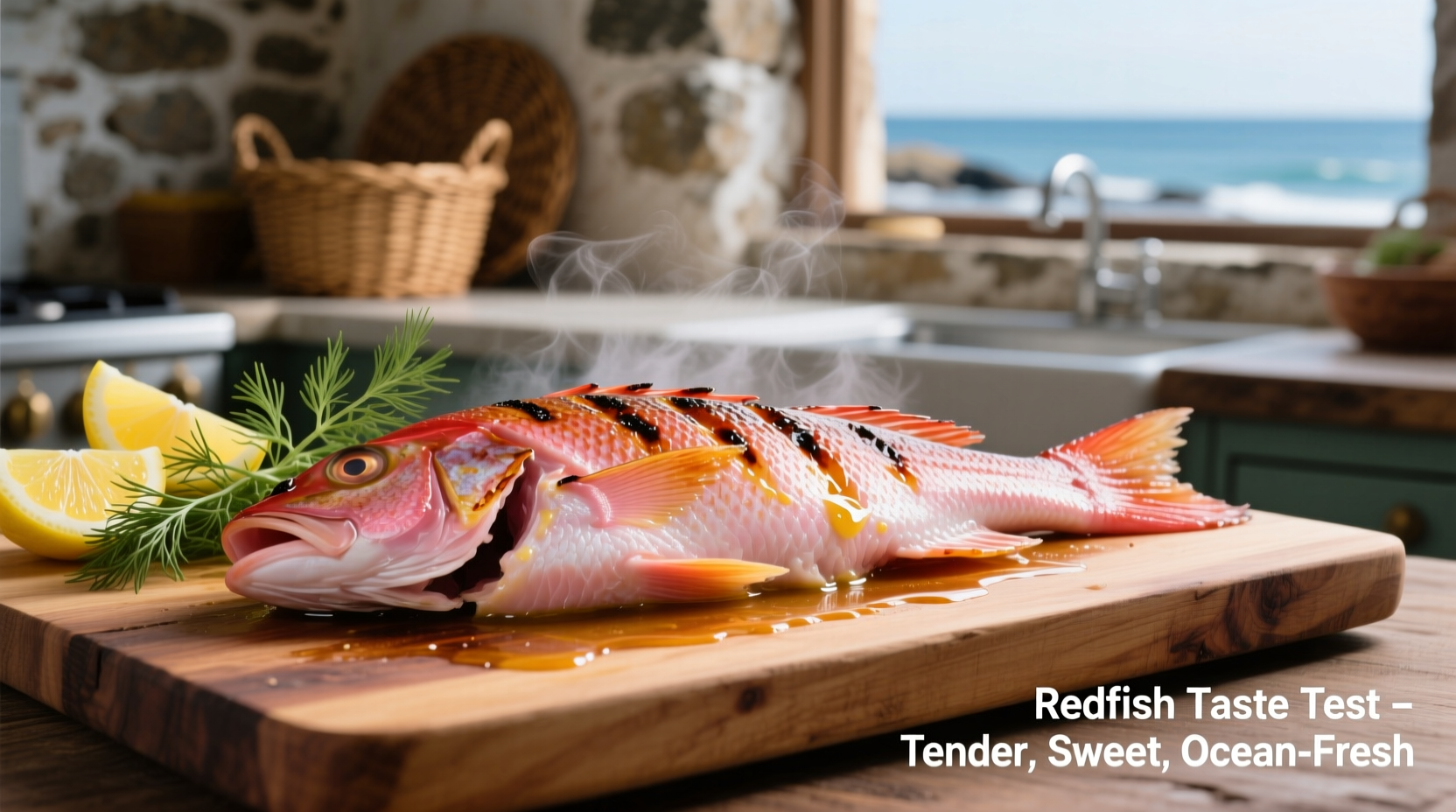Redfish (also known as red drum) has a mild, sweet flavor with firm, moist flesh that's less oily than salmon but richer than cod. Its delicate taste profile makes it versatile for various cooking methods, from grilling to pan-searing, without overwhelming 'fishy' notes that some seafood enthusiasts avoid.
When you first taste redfish, you'll notice its subtle sweetness balanced by a clean, ocean-fresh quality. Unlike stronger-flavored fish like mackerel or bluefish, redfish offers a approachable introduction to seafood that even picky eaters often enjoy. The flavor remains consistent whether you're sampling wild-caught specimens from the Gulf of Mexico or responsibly farmed varieties.
Understanding Redfish Flavor Characteristics
Redfish earns its reputation as the "everyman's fish" thanks to its balanced flavor profile. The meat contains just enough natural oils to prevent dryness during cooking while maintaining that desirable mildness. When properly prepared, you'll detect:
- A delicate sweetness reminiscent of fresh scallops
- Subtle briny notes without excessive saltiness
- Minimal fishiness even when cooked simply
- A clean finish that doesn't linger unpleasantly
Professional chefs particularly appreciate how redfish's neutral canvas accepts marinades and seasonings without competing flavors. Unlike stronger fish that can overpower accompanying ingredients, redfish plays well with citrus accents, herb crusts, and even bold Cajun spices without losing its essential character.
| Fish Type | Flavor Intensity | Oil Content | Texture | Best Cooking Methods |
|---|---|---|---|---|
| Redfish | Mild-Sweet | Moderate | Firm, Flaky | Grilling, Pan-searing, Baking |
| Snapper | Mild | Low | Firm, Moist | Pan-searing, Broiling |
| Salmon | Rich | High | Buttery | Grilling, Baking, Poaching |
| Cod | Very Mild | Low | Flaky | Frying, Baking, Steaming |
How Texture Influences the Eating Experience
The texture of redfish significantly contributes to its popularity among seafood lovers. Its firm yet flaky consistency holds together beautifully on the grill—a quality that sets it apart from more delicate fish like sole or flounder. When cooked properly, redfish fillets offer:
- A satisfying resistance when pierced with a fork
- Clean separation into distinct flakes
- Moistness that prevents dryness common in leaner fish
- Structural integrity that works well in fish tacos and salads
According to the National Oceanic and Atmospheric Administration (NOAA), redfish's muscle structure contains moderate fat marbling that enhances both flavor and texture. This biological characteristic explains why it maintains moisture better than cod during cooking while avoiding the oiliness of mackerel.
Culinary Applications That Showcase Redfish's Best Qualities
Redfish's versatility makes it suitable for numerous cooking techniques, but certain methods particularly highlight its natural advantages. Professional chefs recommend:
Grilling with Citrus Accents
Grilling redfish over medium heat with lemon or orange slices placed on top creates a natural steam that infuses subtle citrus notes while preserving moisture. The firm texture prevents sticking and falling apart on the grill grates—a common problem with more delicate fish varieties.
Pan-Seared with Herb Crust
Creating a crust with fresh herbs and minimal oil enhances redfish's natural flavors without overwhelming them. The moderate oil content in the fish prevents sticking while allowing beautiful browning—a technique Antonio Rodriguez demonstrates in his coastal cooking workshops.
Baking with Mediterranean Vegetables
Baking redfish fillets atop a bed of tomatoes, olives, and capers creates a balanced dish where the fish's mild flavor complements rather than competes with the bold vegetable flavors. This preparation method works particularly well for those new to cooking seafood.

Factors That Influence Redfish Flavor
Several elements affect how redfish tastes, helping you make informed choices whether purchasing or preparing it:
Wild vs. Farmed Considerations
Wild redfish typically has a slightly more complex flavor profile due to its natural diet of crustaceans and smaller fish. Farmed varieties, while consistently mild, may lack some of the nuanced brininess found in wild-caught specimens. The Monterey Bay Aquarium Seafood Watch notes that responsibly farmed redfish offers a sustainable option with reliable flavor consistency.
Size Matters
Smaller redfish (under 5 pounds) generally have the most delicate flavor, while larger specimens develop stronger tastes. Many chefs prefer 'puppy drum' (juvenile redfish) for their exceptional tenderness and mildness, avoiding the tougher texture of trophy-sized fish.
Preparation Impact
How you handle redfish before cooking significantly affects the final taste. Proper bleeding and icing immediately after catch preserves sweetness, while improper handling can introduce unwanted 'fishy' notes. Always look for firm, translucent flesh with no strong odors when selecting redfish.
Perfect Pairings for Redfish
Understanding what complements redfish's flavor profile helps create balanced meals:
- Citrus elements: Lemon, lime, or orange brighten without overpowering
- Herb combinations: Dill, parsley, and chives enhance rather than mask
- Light sauces: Beurre blanc or simple olive oil preparations work best
- Vegetable pairings: Asparagus, zucchini, and bell peppers complement well
Avoid heavy cream sauces or overpowering spices that would compete with redfish's delicate nature. The goal should be enhancing, not masking, its natural qualities.
Sustainability and Seasonality Considerations
Redfish populations have rebounded significantly since conservation efforts began in the 1980s. According to NOAA fisheries data, Gulf of Mexico red drum stocks are now considered sustainable. The best seasonal availability runs from spring through fall when water temperatures produce optimal flavor.
When purchasing, look for certifications from organizations like the Marine Stewardship Council to ensure you're supporting responsible fishing practices. Many coastal regions have implemented size limits that protect breeding populations while allowing harvest of younger fish at their peak eating quality.
Common Misconceptions About Redfish Flavor
Several myths persist about redfish that might discourage potential fans:
- "Redfish tastes too fishy" - Properly handled redfish has minimal fishiness
- "Only good fried" - While excellent fried, it shines with numerous preparations
- "Tastes like salmon" - It's milder with less oil content than salmon
- "Only tastes good with heavy seasoning" - Its delicate flavor benefits from subtle enhancements
These misconceptions often stem from improper handling or preparation rather than the fish itself. When sourced and cooked correctly, redfish delivers a consistently pleasant eating experience.
Conclusion: Why Redfish Deserves a Place on Your Menu
Redfish offers the perfect balance for seafood enthusiasts seeking approachable yet distinctive flavor. Its mild sweetness, firm texture, and cooking versatility make it an excellent choice for weeknight dinners and special occasions alike. Whether you're introducing children to seafood or looking to expand your culinary repertoire, redfish provides a reliable option that rarely disappoints.
By understanding how preparation methods affect its delicate flavor profile and selecting quality specimens, you can consistently enjoy redfish's best qualities. This often-overlooked fish deserves recognition alongside more popular options like salmon and snapper for its reliable performance and crowd-pleasing characteristics.











 浙公网安备
33010002000092号
浙公网安备
33010002000092号 浙B2-20120091-4
浙B2-20120091-4